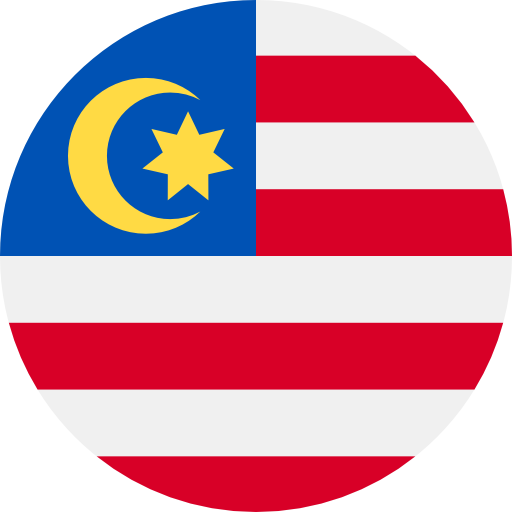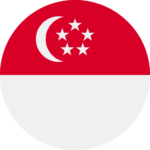Singapore Industrial Design
Overview of Southeast Asia Industrial Design
1. Legislations:
Registered Designs Act (Chapter 266)
2. Definition:
A Design refers to the features of shape, configuration, pattern or ornament applied to an article by an industrial process. It is the appearance of articles we see everyday. An article refers to any object to which the design is applied.
3. Criteria:
Registered Designs are used primarily to protect designs for industrial use. Designs can be two-dimensional or three-dimensional and can be applied to everyday items. To qualify for registration, a design must, in general, satisfy two key criteria: New: It has not been registered in Singapore and elsewhere; or published anywhere in the world before the date of application of the first filing. Thus the owner of a design should be careful not to disclose the design to anyone, until a design registration is filed.
Industrial Process: A Registered Design applied to an article must be capable of an industrial process i.e. more than 50 copies of the article have been or are intended to be produced for sale or hire.
Under the Registered Designs law in Singapore, the following cannot be registered:
– Designs that are contrary to the public policy or morality.
– Computer programs or layout-designs of integrated circuits.
– Designs applied to certain articles: Works of sculpture (other than casts used or intended for use as models or patterns to be multiplied by any industrial process); wall plaques, medals and medallions; and printed matter primarily of a literary or artistic character (including book jackets, calendars, certificates, coupons, dress-making patterns, greeting cards, labels, leaflets, maps, plans, playing cards, postcards, stamps, trade advertisements, trade forms and cards, transfers and similar articles).
– Any method or principle of construction.
– Designs that are solely functional.
– Designs that are dependent upon the appearance of another article, of which it is intended by the designer to form an integral part; or enable the article to be connected to, or placed in, around or against, another article so that either article may perform its function.
4. Rule of Priority:
The design registration system in Singapore operates on a first-to-file basis. In other words, the first person to file for application will, in general, have priority over others
Singapore is a member of the Paris Convention from 1995, whereby applications from convention countries will be subject to the same priority date in Singapore. The application for priority has to be made within six months of the first application in a convention country.
Singapore is also a member of the PCT since 1995. An applicant who has made an international patent application may file and/or prosecute the patent application during its national phase entry into Singapore within 30 months from the filing date of the international application or from the earliest priority date of the application if a priority is claimed.
5. Rule of Priority:
“First to File” is the rule followed by Singapore in determining priority of patents.
6. Duration and Renewal:
A Registered Design can last for an initial period of 5 years. Thereafter, the registration may be renewed every 5 years up to a maximum of 15 years, subject to the payment of renewal fees
1. Application
Every design application has to be filed with the Intellectual Property of Singapore.
2. Examination
A formalities examination will be conducted after the issuance of a filing date to ensure formalities as to the size, quality of the representation and classification are met.
3. Objections
If there are any amendments or deficiencies spotted in the formalities examination, the examiners will notify the applicant and the applicant would have to correct this non-compliance within a given period.
4. Registration
Once an application is in order, a registration certificate will be issued and the application will be published in the Designs Journal. Once published, the published designs are made available for public inspection. It takes about 2 to 3 months from the submission of the application to the successful registration of a design.
The following information and/or documents are required to file an application for an industrial design application in Singapore:-
1. Form D5
a) Full name, address and state of incorporation/nationality of the applicant;
b) Name of article and statement of novelty; and details of any priority claim i.e. at least the country and filing date;
c) International Design Classification. Serial number of the priority application;
d) Full name and address of the author; and e) Information on how the applicant has derived the right to the design from the author (normally by way of assignment, employment or other agreement)
2. Appointment of Agent Form (Form D2) signed by the applicant.
3. Six sets of representations of the design (drawings or photographs).
4. Priority documents and certified English translation (if necessary) of the priority document.
Application Fees
ITEMS | OFFICIAL FEES (USD) | PROFESSIONAL FEES (USD) |
|---|---|---|
1. Filing Application | 240 | 460 |
2. Issuance of Certificate | – | 210 |
* Multiple application is available.
Maintenance Fees
ITEMS | OFFICIAL FEES (USD) | PROFESSIONAL FEES (USD) |
|---|---|---|
For the first period of 5 year | 200 | 420 |
For the second period of 5 years | 300 | 420 |
For the third period of 5 years | 405 | 500 |
For the forth period of 5 years | 505 | 500 |
Basic Requirements
DOCUMENTS | REMARKS | TIME OF FILING |
|---|---|---|
Appointment of Agent (Form ID 2) | no legalization/ notarization requirements | On filing date |
Description of Design | to be translated to English | On filing date |
Drawings/Photographs | On filing date |
Additional Documents for Claiming Convention Priority
DOCUMENTS | REMARKS | TIME OF FILING |
|---|---|---|
Priority documents | to be translated to English language | 2 months from filing |

1. Legislations:
Registered Designs Act (Chapter 266)
2. Definition:
A Design refers to the features of shape, configuration, pattern or ornament applied to an article by an industrial process. It is the appearance of articles we see everyday. An article refers to any object to which the design is applied.
3. Criteria:
Registered Designs are used primarily to protect designs for industrial use. Designs can be two-dimensional or three-dimensional and can be applied to everyday items. To qualify for registration, a design must, in general, satisfy two key criteria: New: It has not been registered in Singapore and elsewhere; or published anywhere in the world before the date of application of the first filing. Thus the owner of a design should be careful not to disclose the design to anyone, until a design registration is filed.
Industrial Process: A Registered Design applied to an article must be capable of an industrial process i.e. more than 50 copies of the article have been or are intended to be produced for sale or hire.
Under the Registered Designs law in Singapore, the following cannot be registered:
– Designs that are contrary to the public policy or morality.
– Computer programs or layout-designs of integrated circuits.
– Designs applied to certain articles: Works of sculpture (other than casts used or intended for use as models or patterns to be multiplied by any industrial process); wall plaques, medals and medallions; and printed matter primarily of a literary or artistic character (including book jackets, calendars, certificates, coupons, dress-making patterns, greeting cards, labels, leaflets, maps, plans, playing cards, postcards, stamps, trade advertisements, trade forms and cards, transfers and similar articles).
– Any method or principle of construction.
– Designs that are solely functional.
– Designs that are dependent upon the appearance of another article, of which it is intended by the designer to form an integral part; or enable the article to be connected to, or placed in, around or against, another article so that either article may perform its function.
4. Rule of Priority:
The design registration system in Singapore operates on a first-to-file basis. In other words, the first person to file for application will, in general, have priority over others
Singapore is a member of the Paris Convention from 1995, whereby applications from convention countries will be subject to the same priority date in Singapore. The application for priority has to be made within six months of the first application in a convention country.
Singapore is also a member of the PCT since 1995. An applicant who has made an international patent application may file and/or prosecute the patent application during its national phase entry into Singapore within 30 months from the filing date of the international application or from the earliest priority date of the application if a priority is claimed.
5. Rule of Priority:
“First to File” is the rule followed by Singapore in determining priority of patents.
6. Duration and Renewal:
A Registered Design can last for an initial period of 5 years. Thereafter, the registration may be renewed every 5 years up to a maximum of 15 years, subject to the payment of renewal fees
1. Application
Every design application has to be filed with the Intellectual Property of Singapore.
2. Examination
A formalities examination will be conducted after the issuance of a filing date to ensure formalities as to the size, quality of the representation and classification are met.
3. Objections
If there are any amendments or deficiencies spotted in the formalities examination, the examiners will notify the applicant and the applicant would have to correct this non-compliance within a given period.
4. Registration
Once an application is in order, a registration certificate will be issued and the application will be published in the Designs Journal. Once published, the published designs are made available for public inspection. It takes about 2 to 3 months from the submission of the application to the successful registration of a design.
The following information and/or documents are required to file an application for an industrial design application in Singapore:-
1. Form D5
a) Full name, address and state of incorporation/nationality of the applicant;
b) Name of article and statement of novelty; and details of any priority claim i.e. at least the country and filing date;
c) International Design Classification. Serial number of the priority application;
d) Full name and address of the author; and e) Information on how the applicant has derived the right to the design from the author (normally by way of assignment, employment or other agreement)
2. Appointment of Agent Form (Form D2) signed by the applicant.
3. Six sets of representations of the design (drawings or photographs).
4. Priority documents and certified English translation (if necessary) of the priority document.
Application Fees
ITEMS | OFFICIAL FEES (USD) | PROFESSIONAL FEES (USD) |
|---|---|---|
1. Filing Application | 240 | 460 |
2. Issuance of Certificate | – | 210 |
* Multiple application is available.
Maintenance Fees
ITEMS | OFFICIAL FEES (USD) | PROFESSIONAL FEES (USD) |
|---|---|---|
For the first period of 5 year | 200 | 420 |
For the second period of 5 years | 300 | 420 |
For the third period of 5 years | 405 | 500 |
For the forth period of 5 years | 505 | 500 |
Basic Requirements
DOCUMENTS | REMARKS | TIME OF FILING |
|---|---|---|
Appointment of Agent (Form ID 2) | no legalization/ notarization requirements | On filing date |
Description of Design | to be translated to English | On filing date |
Drawings/Photographs | On filing date |
Additional Documents for Claiming Convention Priority
DOCUMENTS | REMARKS | TIME OF FILING |
|---|---|---|
Priority documents | to be translated to English language | 2 months from filing |





















